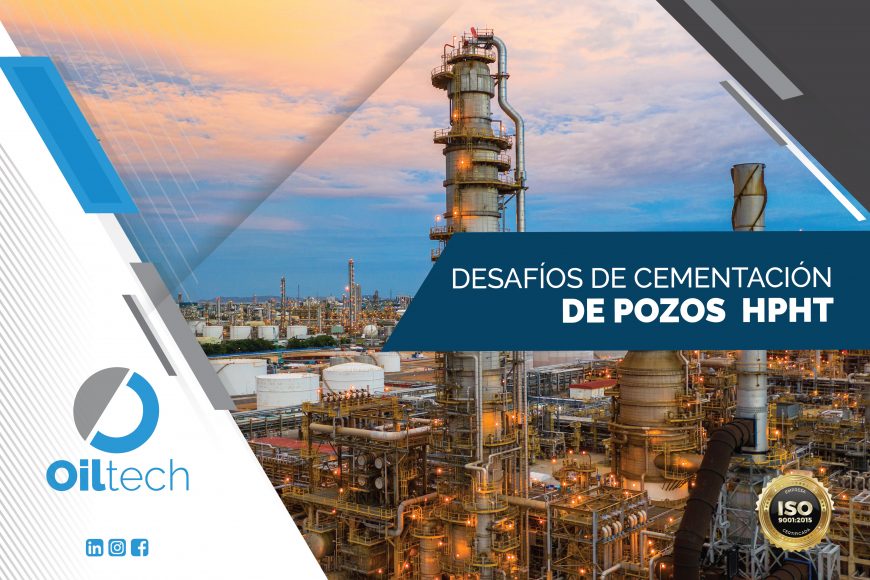
By: Ing. Andrés Marcano – CEMENT SPECIALIST
Do you have High Pressure/High Temperature (HPHT) oil reservoir condition in your country and the cementing operations of casings is not been successful at the first jobs? Here are some tips to help you find solutions to that problem.
HPHT Well Cementation (HPHT) refers to well operations which have reservoir pressures above 10,000 psi and a well bottom temperature above 300˚F.
Cementing wells in HPHT environment is a challenge mainly due to high formation temperatures that could cause cement dehydration by accelerating the cement slurry as a fluid condition into the well. The Proper slurry formulation in laboratory is vital to the success of the operation.
Some differences between an HPHT slurry and a conventional are:
- HPHT slurry has a higher water requirement (Example: For an HPHT slurry of density 20 lbs/gal the requirement is 7.11 gls/sack, while a conventional slurry of 15.6 lbs/gal has a water requirement of 5.2 gls/sack).
- HPHT slurry performance is higher than Conventional performance. (Example: For an HPHT slurry of 20 lbs/gal the yield is 1.87 p3/sack, while a conventional slurry of 15.6 lbs/gal has a yield of 1.18 p3/sack).
- The 24 hours compression resistance of an HPHT slurry is higher than conventional-type slurry. The compression resistance of an HPHT slurry of 20 lbs/gal is approximately 4800 psi, while conventional slurry of 15.6 lbs/gal has a compression resistance of approximately 3900 psi.
- HPHT slurry requires specific high gravity additives (Hematite) to achieve densities of up to 22 lbs/gal, special retarders and temperature intensifiers that are necessary to design a slurry long thickening time.
Field experience shows that for successful well cementing operation in HPHT parameters are:
- Rheology and Pumping Speed to ensure a flow of the Tap- type, usually in HPHT wells the equivalent circulation density (ECD) is narrow margin between fracture pressure and pore pressure.
- The initial consistency of the cement in the HPHT Consistometer is recommended to be less than 30 Bc. as the maximum viscosity limit, if greater the test should be repeated by decreasing the concentration of the filter controller.
- Free water 0, if the well is diverted run the test at 45 degrees incline.
- Static sedimentation, which must be in the order 0 to 0.5 lbs/gal less than the theoretical density.
- Fluid loss API <50 ml / 30 min.
- Fluid compatibility for rheology and thickening time (UCA also in case of OBM) Static Gel Resistance of the contaminated mixture (Fluid-Spacer, Spacer–Lechada), this is important to ensure that contaminated cement is easy to move.
